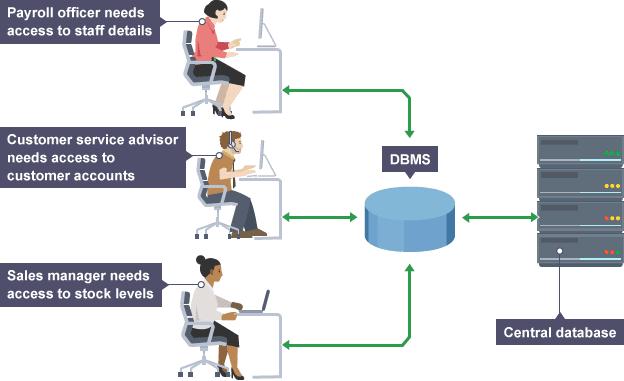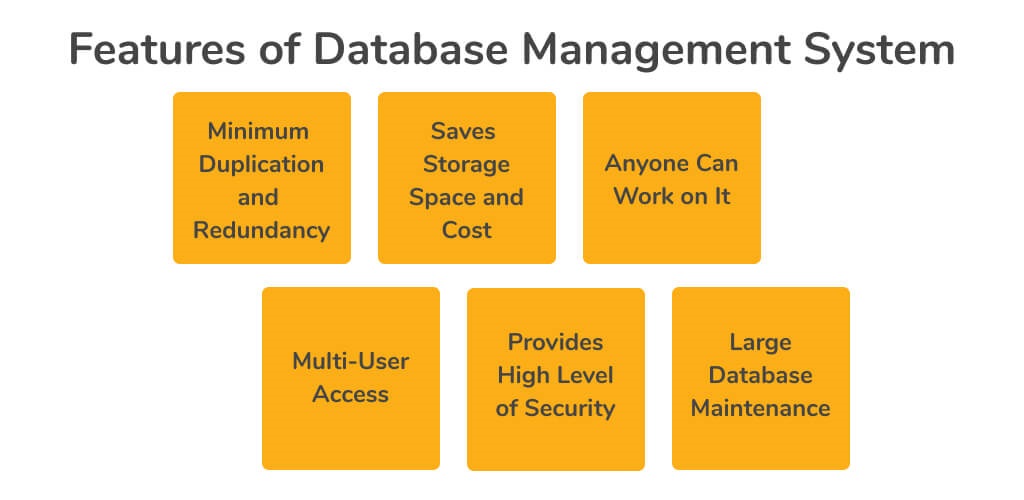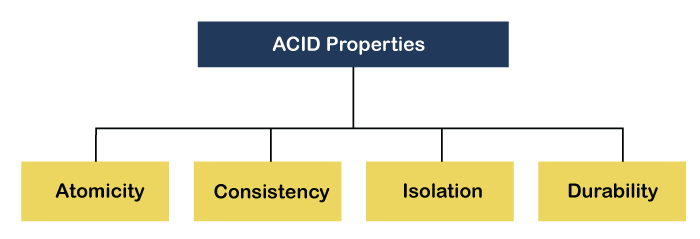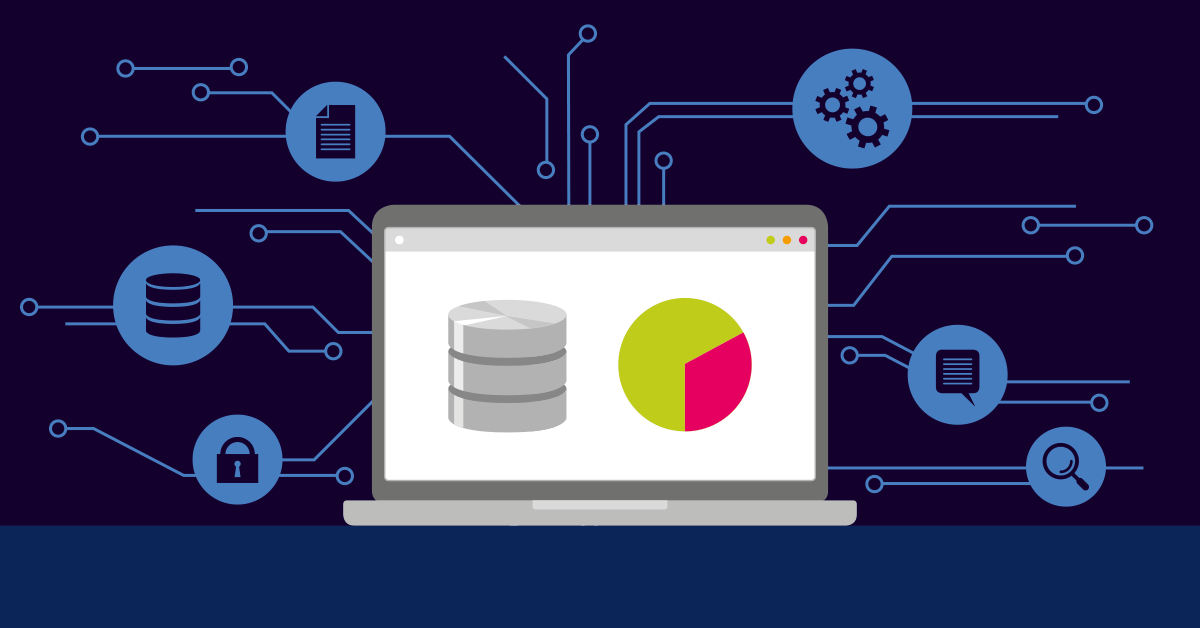 Logicmojo - Jan 12, 2025
Logicmojo - Jan 12, 2025
DBMS stands for Database Management System. We can break it like this DBMS = Database + Management System. Database is a collection of data and Management System is a set of programs to store and retrieve those data. Based on this we can define DBMS like this: DBMS is a collection of inter-related data and set of programs to store & access those data in an easy and effective manner.
The main purpose of database systems is to manage the data. Consider a university that keeps the data of students, teachers, courses, books etc. To manage this data we need to store this data somewhere where we can add new data, delete unused data, update outdated data, retrieve data, to perform these operations on data we need a Database management system that allows us to store the data in such a way so that all these operations can be performed on the data efficiently.
What is the need of DBMS?
Database systems are basically developed for large amount of data. When dealing with huge amount of data, there are two things that require optimization: Storage of data and retrieval of data.
Storage: According to the principles of database systems, the data is stored in such a way that it acquires lot less space as the redundant data (duplicate data) has been removed before storage. Let’s take a layman example to understand this:
In a banking system, suppose a customer is having two accounts, one is saving account and another is salary account. Let’s say bank stores saving account data at one place (these places are called tables we will learn them later) and salary account data at another place, in that case if the customer information such as customer name, address etc. are stored at both places then this is just a wastage of storage (redundancy/ duplication of data), to organize the data in a better way the information should be stored at one place and both the accounts should be linked to that information somehow. The same thing we achieve in DBMS.
Fast Retrieval of data: Along with storing the data in an optimized and systematic manner, it is also important that we retrieve the data quickly when needed. Database systems ensure that the data is retrieved as quickly as possible.
In computer science, a database management system (DBMS) is a system software for storing and sharing information in a database, guaranteeing the quality, durability and confidentiality of information, while hiding Complexity of operations. The data is stored as a sequence of bits representing letters, numbers, colors, shapes, etc. The DBMS has various mechanisms for quickly retrieving data and converting it into information that makes a complete sense.

Classification of DataBase
Database management systems can be classified based on a variety of criteria such as the data model, the database distribution, or user numbers. The most widely used types of DBMS software are relational, distributed, hierarchical, object-oriented, and network.
🚀 Distributed database management system
A distributed DBMS is a set of logically interrelated databases distributed over a network that is managed by a centralized database application. This type of DBMS synchronizes data periodically and ensures that any change to data is universally updated in the database.
🚀 Hierarchical database management system
Hierarchical databases organize model data in a tree-like structure. Data storage is either a top-down or bottom-up format and is represented using a parent-child relationship.
🚀 Hierarchical database
The network database model addresses the need for more complex relationships by allowing each child to have multiple parents. Entities are organized in a graph that can be accessed through several paths.
🚀 Relational database management system
Relational database management systems (RDBMS) are the most popular data model because of its user-friendly interface. It is based on normalizing data in the rows and columns of the tables. This is a viable option when you need a data storage system that is scalable, flexible, and able to manage lots of information.
🚀 Object-oriented database management system
Object-oriented models store data in objects instead of rows and columns. It is based on object-oriented programming (OOP) that allows objects to have members such as fields, properties, and methods.
Features of Database Management System (DBMS)

Minimum Duplication and Redundancy
Because there are many users who use the database so chances of data duplicity are very high. As in database management system, data files are shared that in turns minimizes data duplication and redundancy. All the information in database management system occurs only once so chances of duplicity are very less.
Saves Storage Space and Cost
All the Database management systems have a lot of data to save. But proper integration of data saves much more space in DBMS. Companies are paying so much amount of money to store data. If they have managed data to storing then it will save their cost of storing data and data entry.
Anyone Can Work on It
Users who are not having any technical skills can work on database management system. The query language provided by DBMS is so easy to understand. If you want to update, insert, delete and search any record then it is very easy with the help of queries provided by DBMS. Any non programming user can do this without any help of skilled programmer.
Large Database Maintenance
Large databases of big companies can be maintained only by database management system. These databases require lots of security and other feature like backup and recovery. All these features are contained in DBMS. It can maintain a database with lots of data and information.
Provides High Level of Security
Security is a very big concern for all the organizations who are handling a large amount of data. DBMS doesn’t give the full access of database except DBA or head of the department. They are able to alter the database and all the users are created by them so security level of DBMS becomes so high. No other person or user can access the full database; all of them have restrictions according to their work.
Multi-user Access
In DBMS, multiple users can access all kind data and information stored in one data store. There are certain limits that users can access or view particular data according to the rights given to them. This increases the security and privacy of data for users because they will have their own interface to access data.
Acid Properties in a Database

A transaction is a collection of instructions. To maintain the integrity of a database, all transactions must obey ACID properties. ACID is an acronym for atomicity, consistency, isolation, and durability. Let’s go over each of these properties.
Atomicity
By this, we mean that either the entire transaction takes place at once or doesn’t happen at all. There is no midway i.e. transactions do not occur partially. Each transaction is considered as one unit and either runs to completion or is not executed at all.
It involves the following two operations.
—Abort: If a transaction aborts, changes made to database are not visible.
—Commit: If a transaction commits, changes made are visible.
Consistency
This means that integrity constraints must be maintained so that the database is consistent before and after the transaction.
It refers to the correctness of a database. Referring to the example above,
The total amount before and after the transaction must be maintained.
Total before T occurs = 500 + 200 = 700.
Total after T occurs = 400 + 300 = 700.
Therefore, database is consistent. Inconsistency occurs in case T1 completes but T2 fails. As a result T is incomplete.
Isolation
If the multiple transactions are running concurrently, they should not be affected by each other; i.e., the result should be the same as the result obtained if the transactions were running sequentially. Suppose B_bal is initially 100. If a context switch occurs after B_bal *= 20, then the changes should only be visible to T2 once T1 commits. This ensures consistency in the data and prevents incorrect results.
Durability
This property ensures that once the transaction has completed execution, the updates and modifications to the database are stored in and written to disk and they persist even if a system failure occurs. These updates now become permanent and are stored in non-volatile memory. The effects of the transaction, thus, are never lost.
The ACID properties, in totality, provide a mechanism to ensure correctness and consistency of a database in a way such that each transaction is a group of operations that acts a single unit, produces consistent results, acts in isolation from other operations and updates that it makes are durably stored.
Conclusion
So, in conclusion, we have learned through this article that a database management system (DBMS) is a collection of programs that alter, store, and retrieve user data records from databases while adhering to security protocols. As a result, it provides a link between information repositories and application software. During this phase, the DBMS accepts an application program’s request for data information and instructs the operating system to provide the requested information. Any budding development or data analytics enthusiast of today should definitely have a thorough knowledge of what DataBase Management Systems are and what features and benefits they have to offer.
A lot of software companies and startups ask a variety of questions on Database Management Systems in their interviews and therefore, for people applying for software or data analytics-related job profiles, knowing about Database Management Systems is a must. We hope we have been able to deliver knowledge about the same to our readers through this article.
Good luck & happy learning!!
